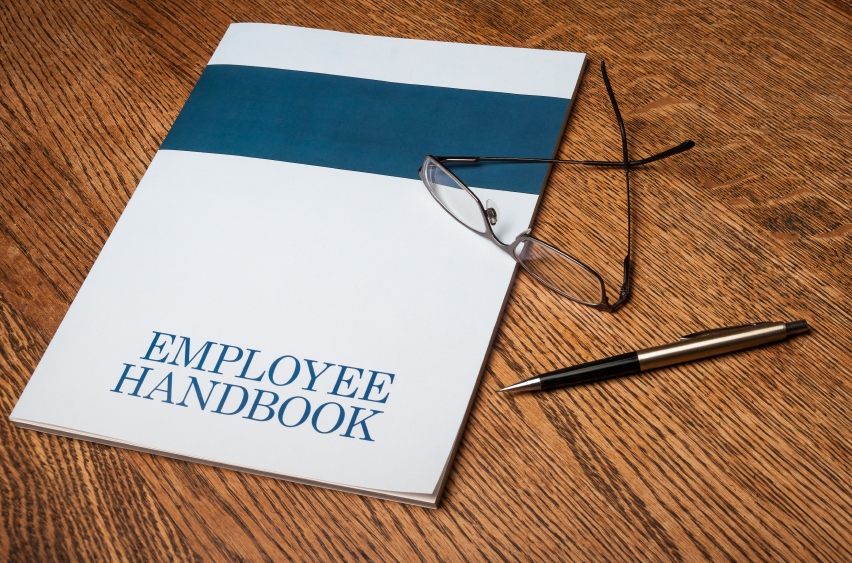Paid sick leave and data privacy are the most commonly addressed emerging issues in today’s employee handbooks, according to a recent survey conducted by XpertHR.
 |
What Emerging Issues Are Making Their Way into Handbooks?
It is interesting to see which of the 13 emerging issues that were included in the survey were in the respondents’ handbooks. Since inclusion in the handbook may be viewed as the legitimization of the topic as a real, ongoing issue for employers, it’s worth paying attention.
The XpertHR Survey of Employee Handbook Practices, conducted in February 2015, garnered 521 responses from employers representing a variety of sizes and types and geographical regions.

Paid sick leave tops the list of emerging issues addressed in respondents’ handbooks, with an impressive 79.4% addressing this new legal trend in their handbooks. Data privacy was second with 67.2%, and social media was a close third at 64.2%.
Wearable technology, such as so-called smart watches, has not yet made its way into handbooks in any significant way, with only 4.1% of respondents indicating they have incorporated this emerging technology into their handbooks.
BYOD, at 14.5% of respondents, LGBT protection at 17.2% of respondents, and e-cigarettes at 20.6% of respondents, all front-burner issues by some accounts, were addressed by only a fifth or fewer respondents in handbooks.
Although medical marijuana, now legal in nearly half of the states (yet still against federal law), was expected to be a challenging issue for workplaces, only 6.4% of respondents have explicitly addressed it in their handbook.
Looking to combine EAP and wellness programs to optimize employee well-being? Start on Tuesday, May 26, 2015, with a free interactive webcast from Ceridian LifeWorks, Integrated EAP & Wellness = Improved Employee Well-Being. Learn More
Public vs. Private Sector
There were some notable differences in these results, depending on sector. For the most part, the public sector is more likely to include policies on emerging issues and, in fact, exceeded the private and nonprofit sectors in all issues listed except data privacy, LGBT protection, and social media.
The most pronounced areas with differences by sector are:
- BYOD: While only 8.3% of nonprofits include BYOD in their handbooks, more than double of their counterparts in the public sector (19%) and nearly double in the private sector (15.3%) do address it in the handbook.
- Domestic Violence Leave: Public sector is notably more inclusive here with 35.4% including a provision on this leave in their handbooks, while the private and nonprofit sectors are more than 8 points lower at 27% each.
- E-Cigarettes: Once again, the public sector is addressing this emerging issue more proactively, with 25.3% public employers addressing it in their handbooks compared with 20.5% private employers and 16.7% nonprofit employers reporting including in their handbooks.
- LGBT Protection: LGBT protections are addressed in a higher percentage of nonprofit handbooks, at 23.8%, with the public sector reporting in at 16.5% and the private sector close to the public sector at 15.8%.
- Paid Sick Leave: The top trend shows interesting variations by sector. While the overall results were 79.4%, the private sector was lower (74%), the public sector exceeded 9 in 10 including in their handbooks (91.1%), and the nonprofits also exceeded the private sector at 85.7% including.
- Wearable Technology: The least common policy trend was twice as common in the public sector as in the private or nonprofits, at 3.7% in the private sector, 7.6% in the public sector, and 3.6% in the nonprofit sector.
Well-constructed programs can attract, retain, and engage. Join us for a free interactive webcast, Integrated EAP & Wellness = Improved Employee Well-Being. Earn 1 hour in HRCI Recertification Credit. Register Now
Structure of Handbook
Reflecting the fact that 45% of respondents operate in a single state, 48.6% of respondents report structuring their handbook as a single-state handbook with policies that integrate federal and state law.
Nearly 1 in 5 respondents report not including state requirements in their handbooks but rather having a national handbook containing federal and generally applicable policy statements.
Only 11.5% report structuring their handbook as a multistate handbook (a national handbook with state-specific supplements distributed to employees by state), while 15.1% report being a multistate employer with standardized policies that apply to all states. That is, presumably they have taken the most generous state’s requirements and applied them to all employees.
In tomorrow’s Advisor, more handbook survey results, plus an introduction to the free webcast from Ceridian LifeWorks, Integrated EAP & Wellness = Improved Employee Well-Being.
(Demographic details and the complete survey may be found at www.xperthr.com/pages/employee-handbooks-research-survey-report?cmpid=PRL|USAG|HUGMN-2015-0312-HB_Research_Survey_Report|PR_pitch&sfid=701w0000000wLLw.)
